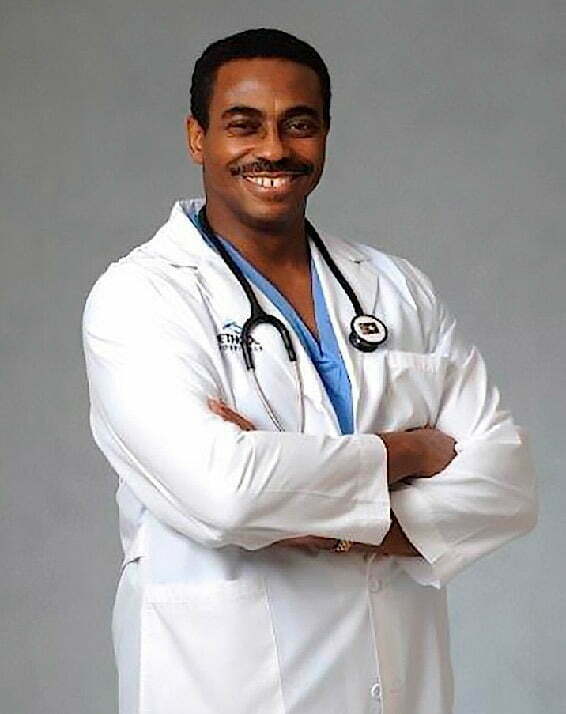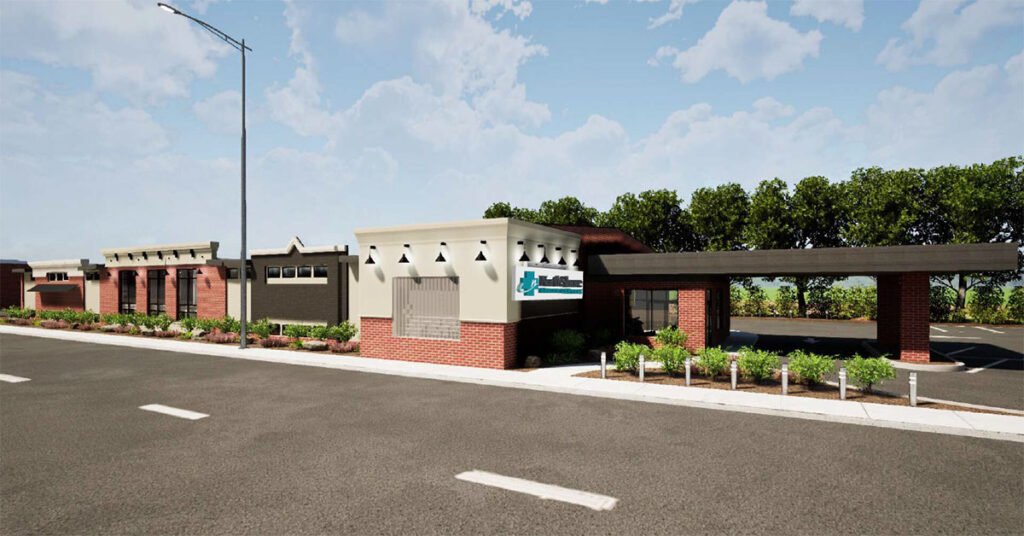Advances in cardiac care give new hope to patients.
by Shari Held
The bad news: Heart disease is still the leading cause of death for men and women in the U.S. And Northwest Indiana's population is at an even higher risk for cardiovascular disease and heart-related conditions than the overall U.S. population.
That's because there's a high incidence of diabetes, high cholesterol, hypertension, smoking and obesity and a lower rate of exercise. “Many times we are dealing with these complications on the back end instead of dealing with it on the front end,” says Anas H. Safadi, M.D., an interventional cardiologist with St. Mary Medical Center in Hobart. “I always try to stress that an ounce of prevention is worth a pound of cure, but in many cases we are trying to patch holes rather than working to prevent heart disease.”
The good news: Cutting-edge technology and new procedures and protocols are making tremendous inroads in the treatment of heart disease. Here's a sampling of some of the latest findings, technology and treatments being offered today in Northwest Indiana.
Infraredx catheter technology
The only thing worse than undergoing a risky procedure is to discover it wasn't necessary. Infraredx TVC catheter technology, introduced for commercial use in 2013, excels at defining the severity of a blockage in a blood vessel.
Patients at Methodist Hospitals, one of the first hospital systems in Northwest Indiana to use Infraredx TVC catheter technology, are singing its praises. Case in point: Earlier this year a 74-year-old woman with a history of hypertension, hypercholesterolemia, diabetes and peripheral vascular disease experienced chest pain. She was given a coronary angiogram, which pinpointed an area of blockage in her left main artery. In some views it looked significant. In others, it didn't. The cardiologist concluded she had an 80 percent blockage and referred her to a surgeon for open-bypass surgery immediately.
Fortunately, the patient asked for a second opinion and saw Andre Artis, M.D., an interventional cardiologist with Methodist Physician Group and director of cardiology at Methodist Hospitals. He wasn't convinced her blockage was that severe and used Infraredx to investigate further.

“When we look with the Infraredx catheter inside the blood vessel, we can actually see things that we wouldn't be able to see otherwise with our more expensive diagnostic equipment,” Artis says. Infraredx revealed a 39 percent blockage. Normally open-bypass surgery, a complicated, six-hour surgery in which the patient's chest is opened and the heart stopped, is not recommended unless the blockage of the left main artery is 50 percent or higher.
“If it weren't for the Infraredx scanning system, this patient would have had open-heart surgery and the associated co-morbidities, and it wouldn't have done her any good,” says Mihas Kodenchery, M.D., interventional cardiologist with Methodist Physician Group. Complications include risk of bleeding, infection and increased risk for stroke. It can take the breastbone up to three months to heal, and during that time the patient is often in significant pain. There are also weeks of rehabilitation involved. Factor in the monetary cost and the emotional and physical disruption of home and work life that comes with a major surgery, and it's no wonder patients sing the praises of Infraredx technology.
This particular patient is now taking anticoagulant and cholesterol medications to regulate her blood pressure and is exercising regularly. “She's hasn't had any chest pain since we started her on the medications,” Kodenchery says. “She's doing very well.”
Other new technology
St. Mary Medical Center was one of the first hospitals in Northwest Indiana to embrace EKOS technology. This catheter-directed ultrasound accelerated thrombolysis dissolves lung clots (pulmonary embolism). Dissolving the clots reduces patients' risk of having long-term, right-sided heart failure and long-term elevated lung pressure. Patients on the brink of respiratory failure who are treated with this technology can breathe easily on regular room air the next day. “In the last year we have used this treatment aggressively with very positive results,” Safadi says.
St. Mary Medical Center is also on the cutting edge when it comes to treating deep vein thrombosis (clots in the leg veins) by removing or dissolving them instead of using anticoagulants, which are often ineffective at removing existing clots. “We do this because there's a 30 to 40 percent risk for these patients to get post-thrombotic syndrome–chronic lower-extremity pain and swelling,” Safadi says. “This is another condition we are very aggressive about treating and have been doing so for several years.”
Advances in techniques
Atrial fibrillation (A-fib), the most common type of arrhythmia (abnormal heart beat), affects approximately three million people in the U.S. A-fib accounts for 15 to 20 percent of strokes caused by clots, and patients often experience fatigue, shortness of breath and decreased capacity for exercise. In 2011 Raman Mitra, M.D., Ph.D., FACC, a cardiac electrophysiologist at Memorial Advanced Cardiovascular Institute in South Bend, was the first physician in Indiana to introduce a new cryoablation technique for treating A-fib. It works like this: A balloon is inserted in the heart and inflated with nitrous oxide at -40 to -60 degrees Fahrenheit. It is positioned on the affected area, freezing and ultimately scarring the source of the irregular heartbeat.
It's most effective for patients who've had A-fib for under a year, when it's intermittent, when the atrium is mildly enlarged and when there are few associated problems. If the sources of irregular heartbeat are on the back wall of the heart, they can't be ablated without potentially damaging the esophagus. “We can't deliver the energy safely, so in those instances, we treat the areas that can be treated safely, but patients still need to be on medications to control the arrhythmia,” Mitra says.
Medications are only effective 50 to 60 percent of the time and often have serious side effects.
In January 2014, Mitra debuted a hybrid procedure that is a boon for patients with persistent or long-standing A-fib in which the source is in areas difficult to access with a balloon, including the back wall of the heart. In a single procedure, a cardiac surgeon eliminates sources originating along the back wall from the outside of the heart. It is a laparoscopic procedure using a special catheter that cauterizes only toward the heart. The electrophysiologist can then ablate the sources inside the heart. This eliminates risk of damage to the esophagus, a potentially fatal condition, and allows physicians to treat all the sources of A-fib safely.
Another relatively new procedure, radial artery catheterization or radial angiogram, makes the treatment of blockages less risky and more comfortable and convenient for patients. This procedure places the catheter in the radial artery in the wrist rather than taking it through the femoral artery in the groin area. It's safer because it substantially decreases the risks associated with bleeding and vascular complications and therefore increases survival rates. “Patients are often able to get up and walk around almost immediately,” Safadi says.
The power of protocols
It's not just the newest technology or technique that can save or improve patients' lives. What happens behind the scenes in a hospital can make a huge difference in patient outcomes. And accredited chest pain centers, a model that incorporates input from health care givers at all phases of patients' care from paramedics through rehabilitation, have made great strides in cardiac care. Accreditation requires hospitals to take a hard look at all aspects of cardiac care, down to the signage that enables patients to get to the emergency room quickly. Franciscan St. Margaret Health in Hammond (2008) and Dyer (2009) were the first hospitals in Northwest Indiana to create dedicated Chest Pain Centers accredited by the Society of Chest Pain Centers. Franciscan St. Anthony Health in Michigan City and Crown Point are also accredited.
At St. Margaret Chest Pain Center, when patients arrive by ambulance their EKGs have already been transmitted to the physician. Patients who walk into the ER are taken to a room immediately and receive an EKG and have their first set of cardiac markers within 15 minutes. Crucial care and evaluation begins immediately. And the entire team works together in sync according to the most up-to-date protocols.
Eric Cook, M.D., EMS medical director for the city of Hammond, associate director of the Emergency Department and director of the Chest Pain Center, says that's quite an improvement. “These patients receive the most efficient, timely, evidence-based care available,” he says. “Evidence has shown that getting people who are having a heart attack to the cath lab as opposed to treating them with medications, which many hospitals across the nation still do, leads to better outcomes.”
Patients who aren't experiencing a heart attack get to go home. “People nowadays can't afford to miss work,” Cook says. “We have a lot of inner-area single-parent families and it's very difficult for those people to be away from their families for days in the hospital for an evaluation. This is something that benefits everyone.”
Cook's role also encompasses community education outreach to educate people on the signs and symptoms of heart attack and the importance of getting to the hospital immediately. “Most people wait an average of two to four hours to get to the hospital,” he says. “If it is indeed a heart attack, for each hour that passes they lose more of their heart muscle. And that becomes a point of no return.”

Hector J. Marchand, M.D., a cardiologist
affiliated with Northwest Indiana
Cardiovascular Physicians PC, says
there are new questions about how
aggressively patients should be treated.
One area where new protocols are sorely lacking is guidelines for hypertension. “Hypertension is one of the biggest contributors, if not the biggest contributor, to the development of atherosclerosis, arrhythmias, strokes and renal failure,” says Hector J. Marchand, M.D., cardiologist, Northwest Indiana Cardiovascular Physicians PC, who is affiliated with Porter Valparaiso Hospital. “When we are talking about trying to prevent problems downstream, it's important to talk about hypertension.”
Current U.S. guidelines, issued by the federal government, were last published in 2005 and defined normal blood pressure as 120 over 80–less than 130 and less than 80 for at-risk patients. New guidelines should have been published in 2010, but in 2013 the government announced it was delegating that responsibility to the American College of Cardiology and the American Heart Association.
Meanwhile, the European Society of Cardiology (ESC) published its guidelines this summer. Based on the newest worldwide studies, the ESC has “dialed up” the target blood pressure for most patients to less than 140 and less than 90, and for patients age 65 and older, less than 150 and less than 90. The ESC concluded that lower target levels were related to a variety of issues including problems with serum electrolyte levels and a higher incidence of strokes, kidney disease progression, arrhythmias and mortality.
“The big question is whether it's valid to use the guidelines for the European population and apply them to the U.S. population,” Marchand says. The U.S. has a much higher percentage of African-American patients, and hypertension affects them differently than other races, plus the U.S. has a much higher incidence of patients with chronic kidney disease and metabolic syndrome.
Marchand, who sees many high-risk patients, isn't treating high blood pressure as aggressively as he did previously. “Having said that, I will be sensitive enough to understand that there will be some patients that will still need to be treated aggressively,” he says. “That's something we have to navigate through as we see patients now.”



